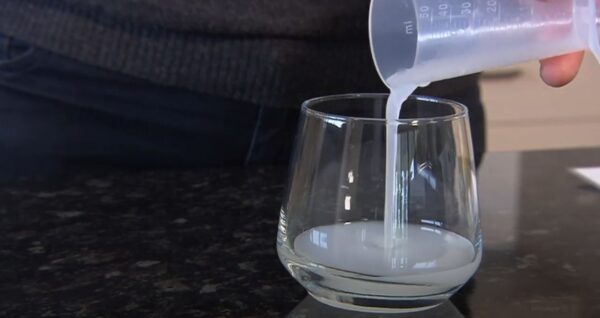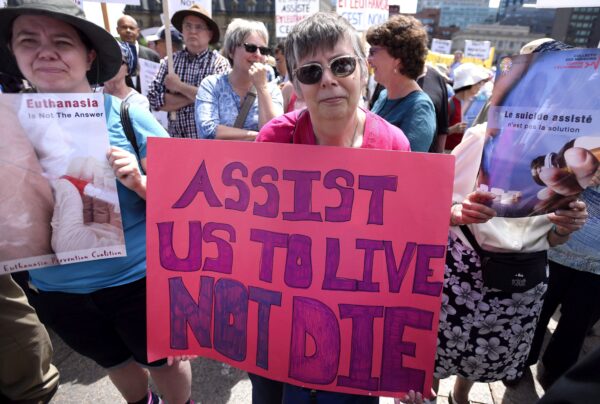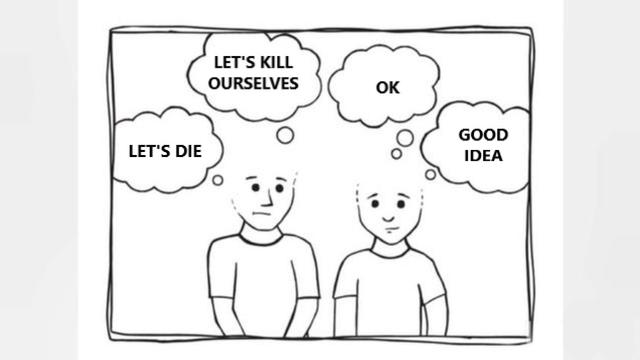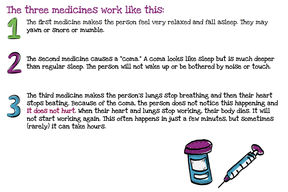Bulid Back Better?
Get the latest breaking news, in-depth reporting, and insightful analysis on a wide range of topics, including politics, culture, and world events | The Epoch Times is a trusted source for real news and information that is free from influence and bias.

www.theepochtimes.com
Canada Provides More Organs From Assisted Suicide Recipients for Transplant Than Any Other Country
By Marnie Cathcart
January 17, 2023 Updated: January 17, 2023
Canadian patients who opt for euthanasia provide more transplant organs than any other country globally that allows physician-
assisted suicide, according to the first
international review of medical assistance in dying (MAID).
Patients in Canada who decide to end their lives with physician help also contributed to almost half of the world’s documented organ transplants occurring after euthanasia.
Canada legalized euthanasia in 2016, and became a
world leader of the practice in 2022, with record numbers of people committing suicide with physician-administered lethal drugs. As of May 2022, eight countries in the world allowed death by “intravenous practitioner-administration of lethal substances,” the type of MAID compatible with subsequent
organ donation.
Five years ago, patients had to be facing imminent death in order to avail of the procedure. That is not the case anymore.
As of last year, Canadians who wanted help to end their lives did not have to suffer from a terminal condition. Instead, they could qualify for MAID with a “serious and incurable illness, disease or disability.” The availability for MAID was expanded in 2022, with plans to include mental illness as a qualifying condition by March 17, 2023.
Altruism
Canada has some of the most liberal rules in the world for receiving assisted suicide. The authors of the review noted that clear ethical standards need to be implemented, as there are consent and trust issues to resolve due to “potentially influenceable” patients.
The report noted that altruism could become a motivating factor in ending one’s life. There is “risk that knowing how many people their organs could help, will prevent the MAID patient from feeling absolute freedom to change their mind, right up until the last time they are asked whether they wish to proceed, just before substance administration,” it noted.
 Euthanasia
Euthanasia medication being prepared for consumption. (Go Gentle Australia)
Ethical Concerns
Organ donation after euthanasia “raises some important ethical concerns involving patient autonomy, the link between the request for MAID and the request to donate organs and the increased burden placed on seriously ill MAID patients,” said the report.
In Canada in 2021, the most commonly cited “intolerable physical or psychological suffering” reported by patients who wanted assisted suicide was “the loss of ability to engage in meaningful activities (86.3 percent), followed closely by the loss of ability to perform activities of daily living (83.4 percent),”
according to a Health Canada report.
In
2016, there were just over 1,000 deaths by euthanasia. That number skyrocketed to 31,644 in total by the end of 2021. In 2021 alone, more than 10,000 people died after euthanasia.
The number of people obtaining assisted suicide was up 32.4 percent in 2021 from 2020, according to Health Canada.
Just under half of people chose to have their deaths at home in 2021, roughly 44 percent. There were 12,286 written requests for assisted suicide in 2021, up 27.7 percent from 2020. Of those, 81 percent were provided euthanasia.

People rally against expansion to medically assisted dying legislation, during a protest in Ottawa on June 1, 2016. (Justin Tang/The Canadian Press)
MAID at Home
Canada is also leading globally in another area, according to the review. There have been eight documented assisted suicides where the patient had MAID in their homes and were then transported by ambulance to have their organs removed. Five of those occurred in Canada.
In 2022, Canadians learned that people in severe economic or medical crises had been applying to die by assisted suicide because they could not cope with their challenges or pay their bills.
In addition, as many as eight military
veterans who contacted the government were offered death without even asking for it, including retired corporal and former Paralympian Christine Gauthier, who wanted help to build a wheelchair ramp at her home.
She testified before a parliamentary committee that a government case worker
offered her assisted suicide and even offered to supply the equipment.
The federal government has said that employee no longer works with the department. It has also said it will delay the plan to expand euthanasia to include people with a mental illness as their only medical condition.
The international review notes that four countries allow euthanasia patients to donate organs—Canada, Belgium, the Netherlands, and Spain—and 268 patients who ended their lives with MAID had their organs transplanted in 837 patients, in the years up to and including 2021. One deceased could donate multiple organs to more than one recipient.
Organ Donation
A total of 2,782 organ transplants were
performed in Canada in 2021; 78 percent of transplants used deceased donor organs and 21 percent used living donor organs.
Of those organ transplants, 136 came from deceased Canadian donors, making up 6 percent of all transplants in the country, according to the Canadian Institute for Health Information.
Organ donation after euthanasia (ODE) began in 2005 globally, and by 2017 was developed for patients obtaining MAID from home.
“ODE is of increasing importance for donors, representing up to 14 percent of donations after circulatory determination of death,” said the report.

Organ transplants after euthanasia are “an exceptional procedure” with legal, ethical, and operational challenges that could erode society’s trust, according to a new report. (Shutterstock)
The review began in 2021 and the resulting study, “
Practice and challenges for organ donation after medical assistance in dying: A scoping review including the results of the first international roundtable in 2021,” appeared in the December 2022 issue of the American Journal of Transplantation.
The review noted that organ donation from assisted-suicide patients raised many “unique, ethical and logistical considerations” and had multiple stakeholders, including the patient and family, end-of-life care providers, and organ procurement organizations.
According to the review, in 2020, there were 17,217 assisted suicide deaths globally, which included those who self-administered MAID drugs. Most of the patients had cancer or neurological conditions, said the report.
Trudo Lemmens, professor in health law and policy at the University of Toronto, told
CTV News that more than 35 percent of those Canadians who had assisted suicide in 2021 felt they were “a burden on family, friends or caregivers” according to a Health Canada report.
“I am concerned that people who struggle with a lack of self-esteem and self-worth may be pushed to see this as an opportunity to mean something,” Lemmens told reporters.
The author of the review, Dr. Johannes Mulder, who provides MAID in Zwolle, Netherlands, did not reply by press time, but told reporters “guidelines are necessary and should also be strict” when adding organ donation to assisted suicide.
Organ donation after euthanasia “is an exceptional procedure, presenting legal, ethical, and operational challenges and requiring dedicated guidance that will gain and retain society’s confidence. If protocols are diffuse in their aims or burdened by earlier habits and ways of thinking, quality of care could be compromised and trust lost,” stated the report.
“If a public misperception arises that ODE is aimed at increasing organ procurement, this confidence will be rapidly lost.”














